Crafting the Ultimate Magic Commander Decklist: Strategies & Insights
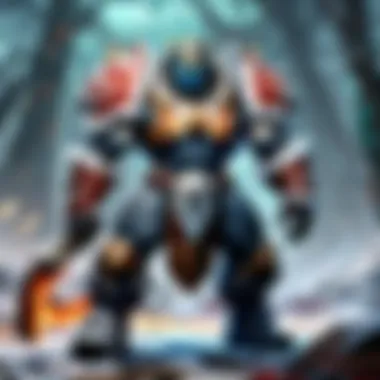
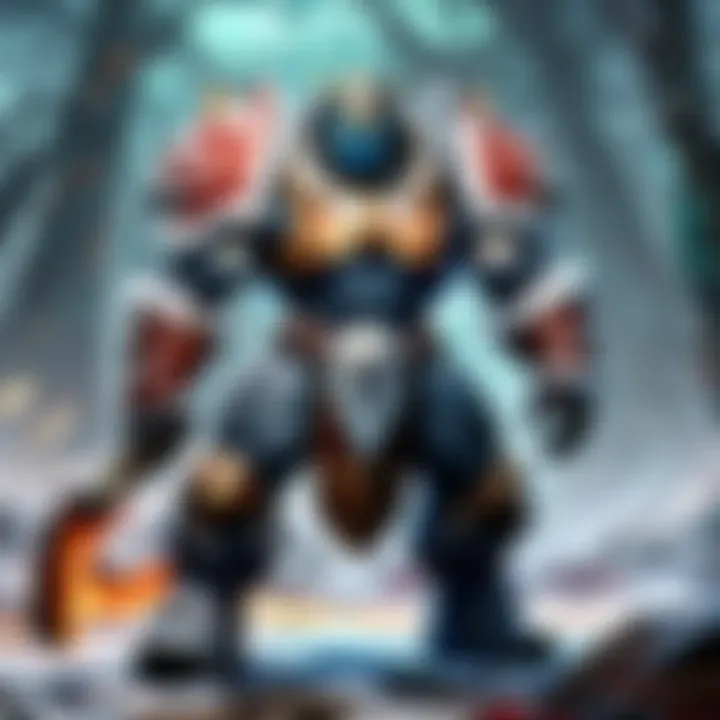
Intro
Building a commander deck in Magic: The Gathering is not just about selecting cards. It is a methodical process that interweaves strategies, themes, and gameplay mechanics. This guide aims to provide a structured approach to crafting a commander deck that strikes a balance between personal expression and competitive performance.
The exploration involves understanding card selection, ensuring thematic cohesion, and mastering resource management. A successful deck aligns with the player's overall strategy and can flexibly adapt to both casual and competitive settings. With the right insights, players can optimize every card in their deck, ensuring that they do not just play, but play effectively.
Basic Concepts of Commander
Before diving into the specifics, it's essential to grasp the fundamental concepts that dictate how a commander deck operates. Each player selects a legendary creature or planeswalker to serve as the commander, and the building of the deck revolves around this central figure.
- Deck Size: A commander deck must contain exactly 100 cards, including the commander.
- Singleton Rule: Only one copy of any card, except basic lands, is permitted.
- Color Identity: Cards must adhere to the colors of the commander's identity. For example, a green commander can use green, colorless, and lands that tap for green mana.
Understanding these core principles sets the stage for crafting a well-rounded and strategic deck.
Strategies for Card Selection
Selecting cards is often the most daunting aspect of deck building. A good strategy begins with a clear vision of how the deck will function.
- Synergy: Choose cards that complement each other’s abilities. For example, if a deck focuses on generating tokens, include cards that enhance or benefit from having a large number of creatures.
- Mana Curve: Balance the mana costs of cards to ensure you can play spells effectively each turn. Aim for a distribution that includes efficient low-cost cards alongside powerful higher-cost options.
“A well-balanced mana curve is vital for ensuring consistent performance throughout the game.”
It’s also helpful to look at popular deck archetypes for inspiration. Researching successful lists can provide insight into what works in constricted formats and reveal emerging trends.
Thematic Cohesion
Another crucial aspect is thematic cohesion. This is where personal expression comes in; your deck should tell a story. Here are some strategies to maintain a cohesive theme:
- Choose a Theme: Consider a theme such as tribal creatures, graveyard mechanics, or control strategies.
- Reflect the Commander: Ensure that the majority of your cards enhance or empower your commander's abilities. This consistency often leads to stronger synergies and gameplay.
In assembling your card list, ensure that each selection contributes to the overarching narrative and strategy you aim to convey.
Resource Management
Effective resource management is one of the most challenging skills to master in Magic: The Gathering. It encompasses not just your life total, but also how you manage mana, card draw, and board presence.
- Mana Management: Track the mana available each turn and plan the plays that maximize your resources. Prioritize cards that provide card advantage or ramp.
- Card Draw: Ensure your deck includes a number of reliable draw options to maintain hand size and adaptability in gameplay.
Balancing these elements will help sustain your board presence and offer the flexibility to react to opponents’ strategies.
The End
In summary, crafting an ultimate Magic commander decklist requires a well-rounded approach to various crucial elements. From understanding the basic structure of a commander deck to implementing effective card selection strategies, each step contributes to the final product. The process is both an art and a science, where personal style meets competitive edge. By following the principles outlined in this guide, players can create a commander deck that is both enjoyable to play and formidable in competition.
Prologue to Magic Commander
Magic: The Gathering has evolved into a diverse spectrum of gameplay formats, with Commander emerging as a favorite among many players. An understanding of the Commander format is crucial for constructing an effective decklist. This article will explore the nuances of building a Commander deck, emphasizing the importance of personal expression and strategic synergy.
Understanding the Format
Commander, often referred to as EDH (Elder Dragon Highlander), is a unique format centered around a single legendary creature chosen as the Commander. Each player constructs a 100-card deck with specific rules: no more than one copy of any card, aside from basic lands, and the entire deck must adhere to the color identity of the Commander. This format encourages creativity, allowing players to explore various strategies and themes that resonate with them.
Building a Commander deck involves a careful evaluation of card interactions and synergies. This format also promotes multiplayer, making strategic alliances and adjusting tactics based on the board state essential. The richness of this format lies in its potential for diverse gameplay experiences.
Why Build a Commander Deck?
Creating a Commander deck offers several advantages for players. Firstly, it serves as a canvas for personal expression. The selection of cards is not merely based on winning but also reflects a player's unique style and strategy preferences.
Secondly, Commander games establish a community atmosphere. This format often showcases a strategy of camaraderie rather than direct competition. Players share stories about their Commander choices or celebrate epic results. The interactive aspect engenders friendships and collaborations, as players engage deeply in strategic and tactical discussions.
Finally, building a Commander deck can be a gratifying challenge. It involves research, experimentation, and iteration. Each deck's construction requires thoughtful considerations on mana management, card synergy, and resource allocation. Such challenges can be fulfilling, as they lead to improved gameplay skills and a deeper understanding of Magic: The Gathering's mechanics.
Commander allows players to express their individuality through deckbuilding while engaging in a community-driven format that enhances social interaction and collaboration.
Choosing Your Commander

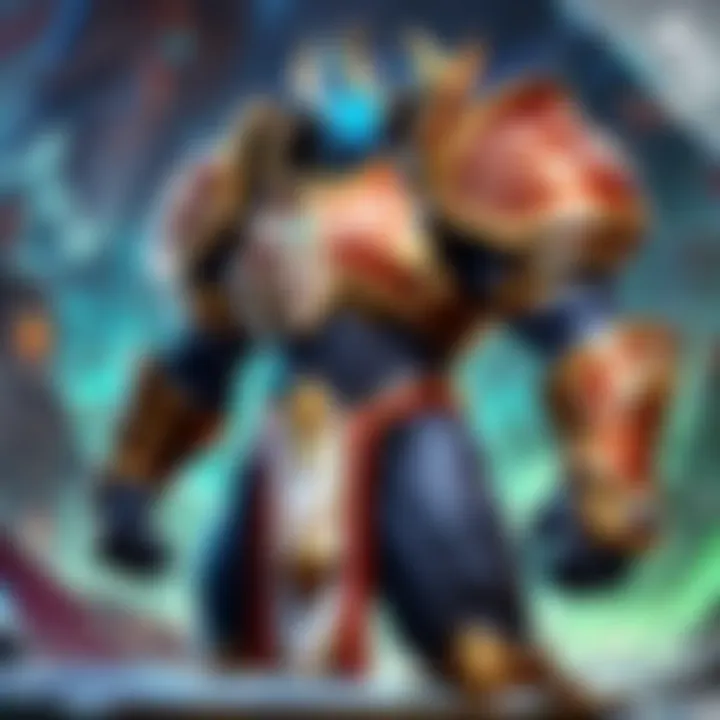
Choosing your commander is a significant step in the construction of a Magic: The Gathering Commander deck. The choice of commander influences the entire deck's color identity, strategy, and theme. Ultimately, the commander sets the tone for your gameplay and impacts the synergy of the cards you will be incorporating.
Evaluating Commanders
When assessing potential commanders, several factors must be considered. First, the commander's colors are crucial, as they dictate which cards are available for inclusion in the deck. Different colors come with unique strengths. For example, blue excels in card draw and counterspells, while red focuses on direct damage and aggression. Consider what style of play resonates more with your approach.
Next, examine the commander's abilities. A strong ability can significantly enhance your strategy. For instance, commanders like Muldrotha, the Gravetide enable recursion of cards from the graveyard, allowing for elaborate plays and resilience against removal. Take the time to explore how a commander's unique abilities can integrate with your planned deck strategy.
Financial considerations also come into play. Some commanders are more popular than others, impacting the cost of associated cards. Researching market trends can assist in budgeting your deck construction.
Synergy with Strategy
The selection of your commander should reflect your overall game plan. This is where synergy becomes paramount. A commander that aligns with your strategy will help ensure that your deck performs well. For example, if you aim for an aggressive approach, a commander like Ghalta, Primal Hunger could be effective due to its potential to create massive threats quickly. In contrast, a control-oriented strategy might be better served by a commander like Narset, Parter of Veils, which can take advantage of card advantage through strategies focusing on spells and manipulation.
Taking into account the available card pool and how well they support your commander's strengths is also vital. Some commanders might offer less direct synergy but can still fit well into a broader strategy. Evaluating card interactions can reveal pathways to effective combinations.
Signature Spells and Abilities
A well-constructed Commander deck often features key spells and abilities directly linked to the chosen commander. These cards will typically align closely with the commander's strengths or play style. For example, if your commander provides tokens, including spells like Elspeth, Sun's Champion or Viscera Seer can increase a deck's efficiency. Think about how certain spells will interact with your commander's abilities.
Additionally, having signature spells should facilitate a reliable game plan. Cards that work well together will often create a streamlined experience. Utilizing spells that bolster your commander's core mechanics can make a significant difference in gameplay.
Addressing various strategies and exploring signatures can ultimately help you form a cohesive and compelling decklist. Thus, the choice of commander extends beyond singular preference and delves into multiple strategic layers, reinforcing the importance of careful selection.
In essence, your commander is not just a card; it embodies your entire deck's strategy and potential for success.
Building the Core Decklist
Building a core decklist is a fundamental stage in the process of crafting a Magic: The Gathering commander deck. This phase involves assembling your selection of cards, ensuring they are not only thematic but also functionally cohesive. A well-constructed core decklist can greatly influence the performance and enjoyment of your games. It reflects your strategic vision, personal preferences, and the unique characteristics of your chosen commander.
Choosing the right cards affects your overall game plan, enhancing synergies and facilitating tactical maneuvers. A strong core decklist can elevate your gameplay, making the balance between competitive viability and personal expression clearer.
Core Mechanics of Deck Construction
Within the deck construction process, several core mechanics must be understood. These include the understanding of the mana system, card types, and game interactions. Each card's role must be analyzed. A successful deck is balanced between offensive and defensive strategies, allowing for flexibility in gameplay.
- Mana System: Understanding the various types of mana and how to utilize them is crucial. Build your deck with a mix of basic lands and dual lands to ensure you can cast spells efficiently.
- Card Types: Cards fall into several categories, including creatures, spells, and artifacts. Each type has a specific function, and they should work together seamlessly.
- Gameplay Interactions: Some cards may not only serve their purpose but also enhance or mitigate the effects of other cards in your deck. Analyze how cards interact to maximize their potential.
Balancing Mana Curve
Balancing your mana curve is essential for ensuring a steady flow of resources. The mana curve represents the cost of your spells and helps determine how many cards you can play in a given turn. Typically, a well-distributed mana curve will include:
- Early-game spells (1-3 mana): Play cards that establish board presence or ramp up your resources.
- Mid-game spells (4-6 mana): Add more powerful creatures and spells that can impact the state of the game.
- Late-game spells (7+ mana): Include game-ending threats or substantial spells that can provide a decisive advantage.
Maintaining a proper balance within your mana curve avoids scenarios where you are either land-starved or unable to utilize your cards effectively. The goal is to create opportunities for plays at all points in the game.
Types of Cards: Creatures, Spells, and Artifacts
Your deck will revolve around several key card types: creatures, spells, and artifacts. Each serves a distinct purpose that can support your commander’s strategy.
- Creatures: The backbone of your combat strategy. Select creatures that align with your overall game plan—be it aggressive, defensive, or a mix.
- Spells: These include instants and sorceries that provide direct effects. Choose spells that offer utility, removal, or support.
- Artifacts: Often serve as versatile tools that can amplify your strategies. Artifacts can provide additional mana, card draw, or unique effects that turn the tides of battle.
Considering these types when designing your core decklist promotes a more strategic approach. Aim for diversity but ensure that all components synergize with your commander and each other, creating a cohesive gameplay experience.
A well-structured core decklist can enhance enjoyment and ensure that each game session remains engaging.
Thematic Considerations
Thematic considerations are vital in crafting a Magic: The Gathering Commander deck. They are what give your deck identity and can significantly impact your enjoyment of gameplay. A well-established theme not only guides your card choice but also helps communicate your strategies and storytelling through gameplay. This can differ from player to player. Some might prioritize flavor, associating their card choices with a particular story, while others might focus on the mechanics. Either way, a cohesive theme enhances the deck's appeal.
Establishing a Theme
Creating a theme involves deciding on a central concept that unifies your card choices. Think about the kind of experience you want to create. This could involve aspects such as specific creature types, color combinations, or even particular mechanics that align with your Commander’s identity. For example, if your Commander is a Dragon, your theme could center around Dragon synergies and spells that amplify their power.
Consider leveraging specific archetypes like “tribal” or “storm.” this may help focus your card choices. You might want to build around a color identity or thematic keyword. Each element should work together to build a strategy.
Important considerations include:
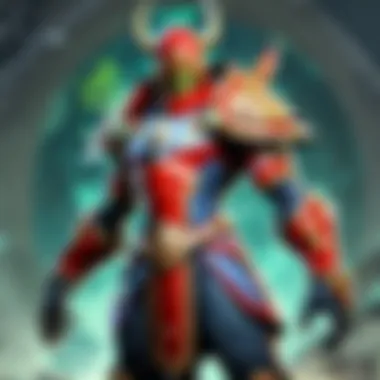

- Commander Alignment: Ensure your chosen Commander fits well within your theme.
- Card Selection: Prioritize cards that symbolize or enhance your theme effectively.
- Visual Aesthetics: A visually cohesive deck can enhance the thematic experience for both you and your opponents.
Flavor vs.
Function
In deck-building, there often comes a tension between flavor and function. Flavor refers to the thematic elements that tell a story or evoke a certain mood. Function is about how well the cards perform in gameplay. Balancing these aspects is crucial for a successful deck.
When emphasizing flavor, consider cards that may not be the most competitive but resonate with your theme. However, if performance is your priority, you might sacrifice thematic elements for more efficient spells and creatures. Nonetheless, consider that a deck built purely for function risks losing personal touch and enjoyment. The best decks often find a middle ground between these two elements.
Writing cards that may seem less efficient thei might fit your theme can lead to enjoyable experiences. Consider the importance of making game decisions that reflect not only strategic thinking but also personal expression.
Resource Management
Resource management is a cornerstone of gameplay in Magic: The Gathering, especially in the Commander format. It involves the strategic allocation and utilization of cards, mana, and life points. Effective resource management can differentiate between a well-tuned deck and one that struggles to perform consistently. Players must understand how to maximize their resources to create advantageous situations while minimizing risk.
One of the primary elements of resource management is ensuring you have the right balance of mana sources and spells. This balance is not merely about having a good mana curve but understanding how much mana your deck needs to function effectively at different stages of the game.
Benefits of proficient resource management include:
- Consistency: A well-managed deck can execute strategies with reliability.
- Flexibility: Players can adapt to various opponents and situations without being hindered by underutilized resources.
- Longevity: Effective management can extend games, providing players with more opportunities to execute their strategy.
Effective Mana Utilization
Effective mana utilization is critical in Magic: The Gathering. Utilizing mana efficiently involves making decisions about when to commit resources to spells and when to conserve them for future turns. Players should consider the color distribution in their decks and ensure they have enough sources of each type to meet their needs.
Here are some methods to maximize mana usage:
- Mana Ramp Cards: Cards like Cultivate or Kodama's Reach can help increase mana output in the early game.
- Mana Fixing: Include cards that can produce different colors of mana, for instance, Farseek or Chromatic Lantern.
- Efficient Spells: Opt for spells that provide maximum impact for the least mana, such as hybrids or reduced-cost spells.
These strategies work toward creating a mana base that supports your overall game plan while ensuring you can engage effectively in all stages of the match.
Card Draw and Filtering
Card draw and filtering serve as fundamental resource management tools in Commander. The ability to draw cards consistently enhances the deck's effectiveness by providing options and paths to victory. Players often find themselves in situations where their hand depletes, leaving them vulnerable. Thus, maximizing card draw ensures that players maintain a flow of resources.
Card filtering involves drawing cards but also manipulating your hand to find better spells. Cards like Ponder or Preordain allow players to sift through their libraries, ensuring they draw cards that align with their strategic approach. Some important aspects to consider include:
- Diverse Sources of Draw: Integrate various sources—like enchantments such as Rhystic Study—to ensure continued access to cards.
- Synergy with Commander: Choose draw spells that work well with your Commander’s abilities, enhancing the steel.
- Managing Hand Size: Ensure not to overwhelm yourself with too many draw effects, as this can lead to a crowded hand with fewer options.
Utilizing both card draw and filtering systematically is key to keeping your strategy adaptable against opponents. The ability to shift your game plan based on available resources is crucial to securing victory in Commander.
Synergies and Combos
Understanding synergies and combos is crucial for any player looking to optimize their Magic: The Gathering Commander deck. At its core, this involves the relationships and interactions between different cards. When you select cards that work well together, it not only elevates the overall effectiveness of your deck but also enhances your gameplay experience.
Focusing on synergies allows you to identify patterns and strategies that can lead to stronger board presence. A well-crafted combo can shift the tide of the game in your favor, creating opportunities that may not have been possible with standalone cards. Such interactions can be defined in terms of creatures, spells, and other elements, further enriching your tactical approach to the game.
The benefits of honing in on synergies and combos include increased consistency and more predictable outcomes in matches. Players who recognize the power of these interactions can anticipate the moves of their opponents while executing their plans with greater efficiency. Messages conveyed by your deck become clearer when components align to support each other.
Identifying Key Interactions
Start by examining your deck's theme and the abilities of your Commander. Each card should ideally serve dual purposes: contributing to your main strategy and creating potential triggers for synergies. A simple way to identify key interactions is to look for cards that can enhance or modify one another’s effects. For example, if you're running a token creation strategy with Elspeth, Sun's Champion, consider including cards like Skullclamp or Sovereigns of Lost Alara to draw extra cards from your tokens.
It's also important to consider the mana cost of the cards you choose. Some powerful spells may offer great effects, but if they don't fit seamlessly into your overall game plan, they can disrupt your flow. Take time to analyze how cards like Doubling Season can impact creatures like Avenger of Zendikar. Such pairings can elevate the power of your deck by providing valuable resources that can turn the game in your favor.
Key Strategies for Identifying Interactions:
- Check for cards that share similar mechanics.
- Look for multicolor cards that amplify effects based on color identities.
- Examine abilities that trigger under specific conditions to maximize value.
Implementing Game-Winning Combos
Implementing combos involves not only recognizing which cards work well together, but also creating a plan for how to execute them effectively during gameplay. A classic example would be the combination of Kiki-Jiki, Mirror Breaker and Zealous Conscripts. This combo allows you to generate infinite hasty copies of creatures, which can be crucial in dealing lethal damage to opponents.
To implement such combos successfully, it's wise to include supporting cards that accelerate your game plan. Cards like Discovery // Dispersal can help find your crucial pieces faster. Prioritizing draw and search abilities can mean the difference between failure and success when trying to execute a combo.
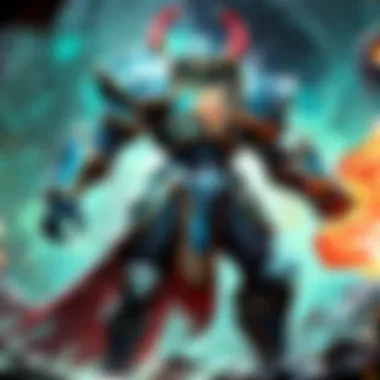

Understanding timing is another vital aspect of effective combo implementation. Knowing when to reveal your hand and commit to your strategy can determine success in a match. Make sure to leave room for counterplays or interruptions from opponents. A card like Teferi’s Protection can safeguard your strategy if you suspect opponents have responses ready.
Steps to Implement Game-Winning Combos:
- Determine the essential pieces of your combo.
- Include cards that provide card draw and search ability.
- Understand opponents' strategies to mitigate their responses.
- Time your plays carefully to avoid counteractions.
Always think several moves ahead. The right synergy in hand can turn a game around unexpectedly.
Testing and Iteration
In the intricate process of building a Magic: The Gathering commander decklist, testing and iteration stand out as fundamental pillars. These processes ensure that the deck not only aligns with your strategic vision but also meets the challenges of actual gameplay. By systematically evaluating the deck, you uncover its strengths and weaknesses. This approach creates an opportunity to refine your strategy and hone the deck’s performance.
Playtesting with Friends
Playtesting serves as the most effective means to gauge how your deck operates under various circumstances. Gathering a group of friends who share an interest in commander games can facilitate this process. The dynamics of multiplayer games often lead to unexpected interactions among cards. During these playtests, observe how your deck performs against different archetypes and strategies.
Evaluating how well your deck interacts with those of your opponents will provide valuable insights. Consider the following aspects during playtesting:
- Speed: How quickly does your deck achieve its win condition?
- Resilience: How well does it handle disruption?
- Consistency: Does your deck deliver the right cards when needed?
Document your playtesting sessions carefully, noting moments of success and failure. This information will be crucial for subsequent revisions.
Adjusting the Deck Based on Feedback
After conducting several playtesting sessions, the next step involves adjusting the deck based on feedback. Engaging with fellow players not only offers diverse perspectives but also uncovers aspects you might not have noticed. It is essential to consider their suggestions without compromising your deck’s core identity.
Key considerations when making adjustments include:
- Card Performance: Identify cards that consistently underperform. Consider replacing them with alternatives that better suit your strategy.
- Deck Balance: Ensure that you maintain a healthy balance between various card types. A well-rounded deck is resilient to differing gameplay situations.
- Meta Awareness: Be mindful of the evolving meta. Adapting a deck to counter prevalent strategies can significantly improve its effectiveness.
Iterating your deck based on these factors creates a living document. A commander deck should always evolve, reflecting your growth as a player and the shifting landscape of the game. Keep a record of each revision, creating a path of progress to learn from.
Community Resources
In the world of Magic: The Gathering, building a Commander deck can be an intricate process. To navigate this landscape effectively, community resources play a critical role. These resources connect players, offering various tools and platforms for deck-building insights, feedback, and discussion. Engaging with the community allows players to expand their knowledge, improve their strategies, and find inspiration among fellow enthusiasts.
Online Deck-Building Tools
Online deck-building tools are invaluable for anyone looking to create a Commander deck. They offer user-friendly interfaces where players can easily search for cards, manage their collections, and visualize their decks. One of the most popular tools is TappedOut.net, which allows users to build decks while calculating mana curves and providing card suggestions based on synergy.
These platforms can help you:
- Test Deck Concepts: Try different card combinations to see what works before committing to physical cards.
- Get Feedback: Share your decklists with the community to receive constructive criticism and suggestions.
- Track Changes: Documentation of revisions can help understand your deck's evolution over time.
While some tools focus solely on deck construction, others like MTGGoldfish or Deckbox.org provide market price tracking for instances when budget is a concern. The access to real-time updates on card prices ensures that players can make informed decisions without overspending.
Forums and Discussion Boards
Forums and discussion boards represent another pivotal community resource for Magic: The Gathering players. Platforms like Reddit or niche sites specific to MTG foster engaging discussions where players can inquire about deck-building strategies, card synergies, and meta trends.
These spaces offer various benefits:
- Diverse Perspectives: Engage with a wide range of opinions and experiences across different player backgrounds.
- Live Interaction: Posting questions or comments can lead to real-time discussions, enriching your understanding through dialogue.
- Resource Sharing: Members often share articles, videos, and other instructional material that can deepen your knowledge of the game.
Closure and Final Thoughts
The journey of crafting your Magic Commander decklist is a profound and often personal experience. It is about more than just card selection; it is about creating a viable strategy that reflects your identity as a player. Understanding the conclusion and final thoughts of this process is essential.
In this article, we have delved into various aspects of deck building, including the critical importance of synergy, resource management, and the community around the game. Each of these elements is crucial for developing a deck that performs well in both casual and competitive environments.
The Evolution of Your Decklist
No deck is ever truly finished. The evolution of your decklist will depend on the experiences you gather from playing games and participating in the community. Every game provides insight that could lead to minor adjustments or major overhauls. Constantly reviewing your performance and the responses of your opponents can reveal valuable patterns and weaknesses.
An effective way to approach this evolution is to keep a record of changes and play results. You can note which cards consistently perform well and which ones seem to underperform. Over time, trends will emerge, guiding your decisions in card swaps and deck refinements. Moreover, staying informed about new card releases and shifts in the meta will help you maintain a deck that is competitive. Building a deck is not a one-time task; it is a continuous cycle of refinement.
Enjoying the Commander Experience
Lastly, amidst the strategic elements and thought processes, it is crucial to remember that Magic: The Gathering is fundamentally a game meant for enjoyment. The Commander format emphasizes social interaction and creativity. Enjoying the experience should always be paramount, as it encourages lasting connections within the community.
Embrace the chaos of multiplayer games, share your insights, and relish in both victories and defeats. Seek opportunities to engage with others through forums, local events, and online platforms like Reddit, where discussions flourish and advice flows freely.
"Magic is a community experience. As you build your deck, remember to share your journey and connect with others. This enhances not just your deck but also enriches your gaming experience."



